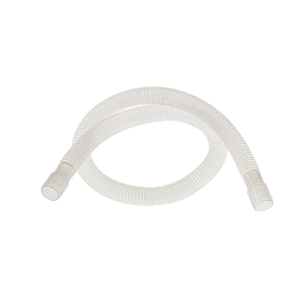Understanding CPAP Tubing Longevity
Continuous Positive Airway Pressure (CPAP) therapy is a common treatment for obstructive sleep apnea, and its effectiveness relies heavily on the maintenance and condition of its components, particularly the CPAP tubing. CPAP tubing, which connects the machine to the mask, plays a crucial role in delivering pressurized air to the patient. Understanding how long CPAP tubing remains effective and when it should be replaced is essential for optimal therapy and hygiene.
Typical Lifespan of CPAP Tubing
The general recommendation is to replace CPAP tubing every 12 months. Over time, tubing can develop small holes or tears, which can lead to air leaks and reduce the effectiveness of the therapy. These defects can be hard to detect but significantly impact the performance of the CPAP machine.
Factors Influencing Tubing Replacement
Several factors influence the lifespan of CPAP tubing:
- Material Quality: The quality of the plastic used in CPAP tubing can vary. Higher-quality materials may last longer but will still eventually degrade.
- Usage: The frequency and intensity of use impact the tubing’s longevity. Regular, nightly use will wear out the tubing faster than occasional use.
- Cleaning Practices: Proper and regular cleaning is essential. Tubing should be cleaned weekly with mild soap and water and allowed to air dry completely before use. Poor cleaning habits can lead to faster degradation and potential buildup of bacteria and mold.
- Environmental Factors: Exposure to direct sunlight, extreme temperatures, or high humidity can weaken the tubing over time.
Signs That Tubing Needs Replacement
Users should be vigilant for signs indicating that the CPAP tubing needs replacement:
– Visible Wear and Tear: Cracks, holes, or tears are clear indicators that the tubing needs to be replaced immediately.
– Air Leaks: If you notice a decrease in the effectiveness of your therapy, it could be due to air leaks in the tubing.
– Discoloration: Tubing that has turned yellow or is showing signs of discoloration might be breaking down and should be replaced.
– Odors: Persistent odors that do not go away after cleaning may indicate the presence of mold or bacteria.
Special Considerations for Heated Tubing
Heated CPAP tubing, which helps reduce condensation and improve comfort, has similar lifespan considerations but might require more frequent inspection due to the additional components involved. These tubes can be more prone to wear because of the internal heating element. Users of heated tubing should follow the same replacement guidelines and be extra cautious about signs of wear.
Insurance and Replacement Schedule
Many insurance plans cover the replacement of CPAP supplies, including tubing, on a regular schedule. It’s common for insurance providers to allow tubing replacement every 3-6 months, even though the general recommendation is 12 months. This ensures that users always have access to effective, clean supplies.
Conclusion
Maintaining the integrity of your CPAP tubing is crucial for effective CPAP therapy. Regular inspection, proper cleaning, and timely replacement can ensure that your treatment remains effective and hygienic. By following these guidelines and being mindful of the signs of wear and tear, CPAP users can maintain their equipment’s performance and extend its life, ultimately supporting better health outcomes.



